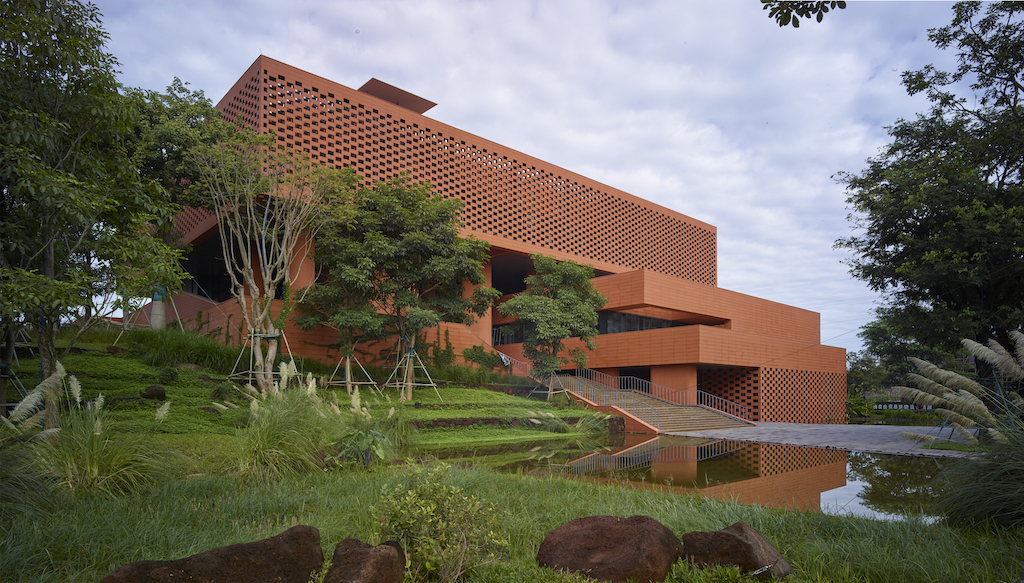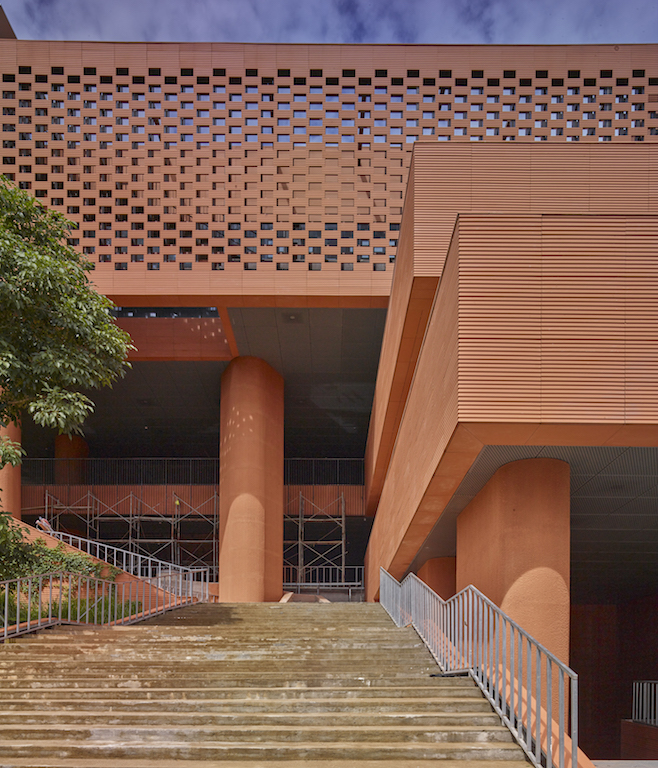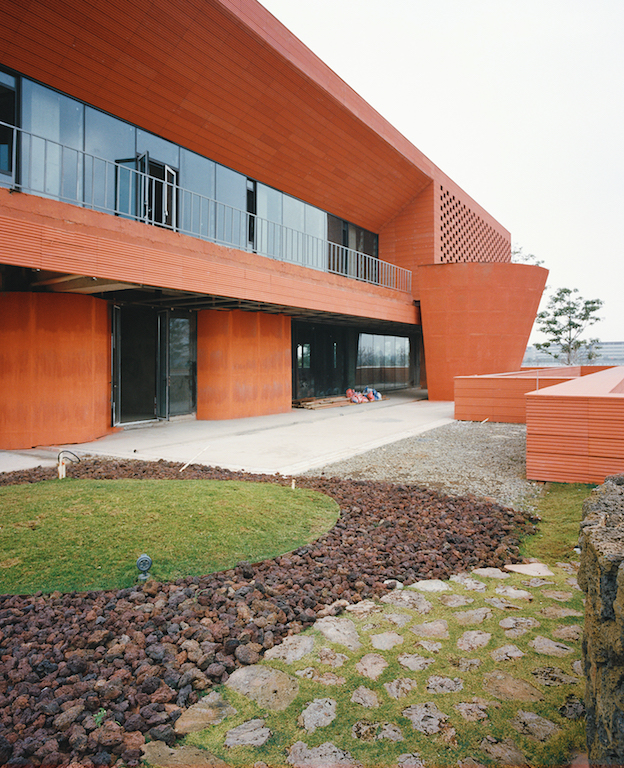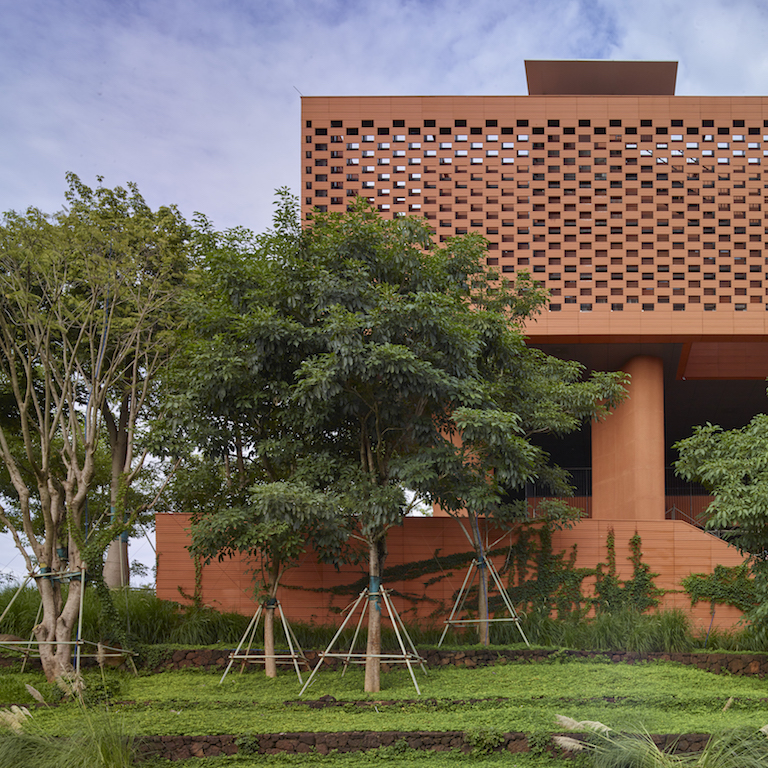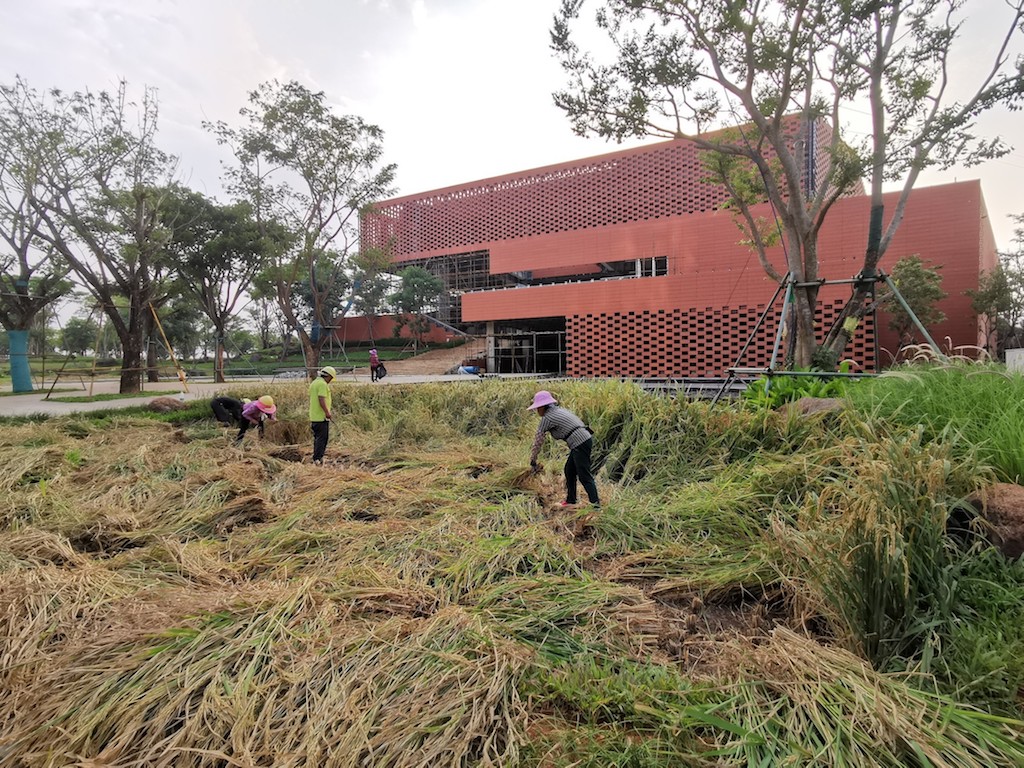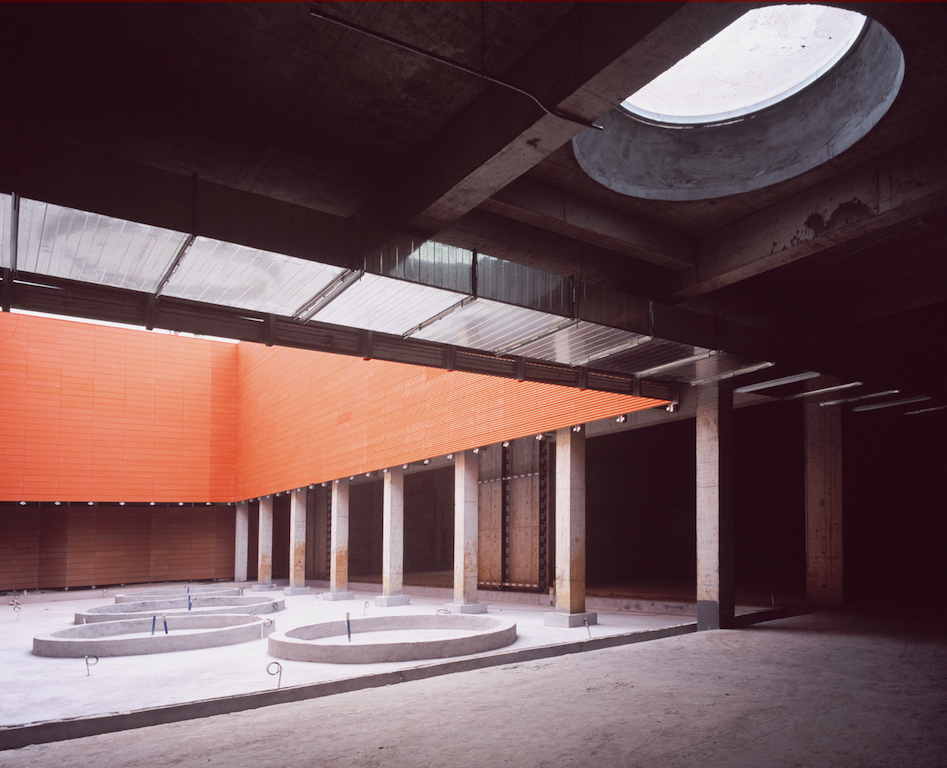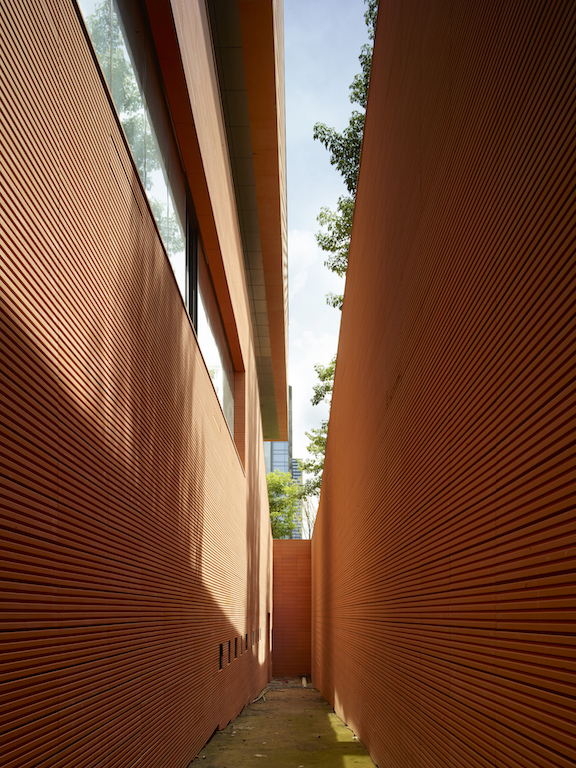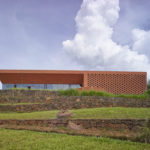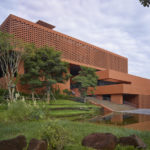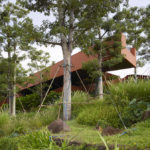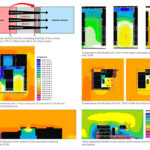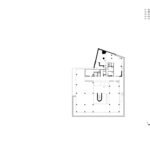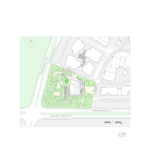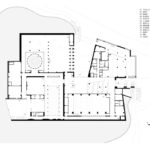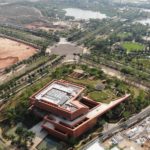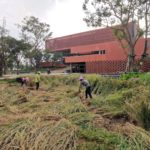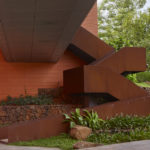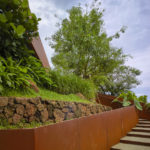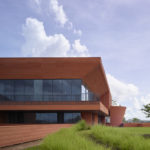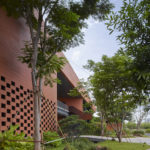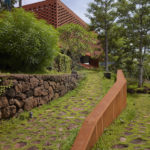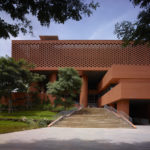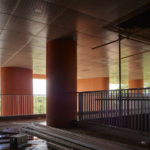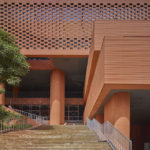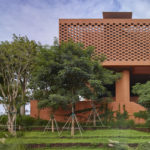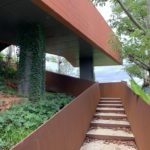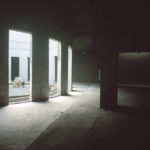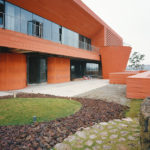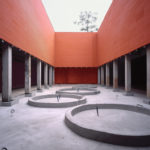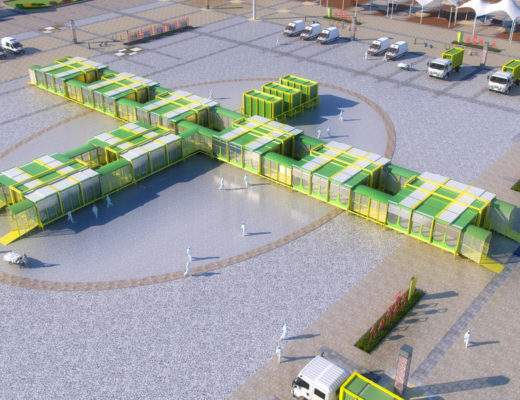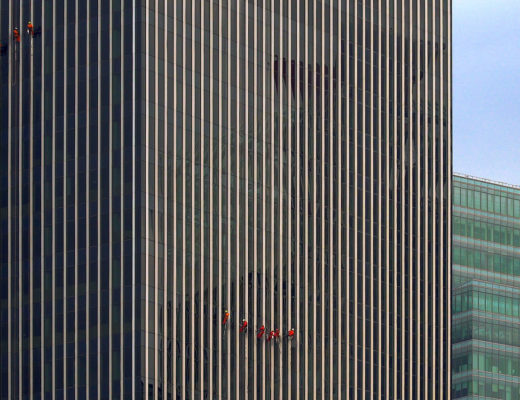Designed by SUP Atelier, the Hainan Smart Ecological New City Digital City Hall, themed “Garden & Courtyard”, is a multi-functional building available for exhibition, creative industries, and commercial offices. The design, starting from climatic strategies for subtropical zones, has introduced terraced fields, a series of interconnected courtyards at various altitudes, outdoor atriums and cooling alleys into the building. Taking the abstract prototype of Eastern gardens and courtyards as a reference, these spaces are integrated into the multi-functional city hall to form a multi-dimensional public space with gardens and courtyards, where people can enjoy various scenes with changing viewpoints through the winding paths.
“In Hainan, what impressed us most was the sight of red soil on my first trip to the construction site. As a result, we decided to build with the colour of red soil, on which the rich vegetation of Hainan thrives, and to which we would like to pay our tribute with such an earth-coloured building.” Xiaojuan Chen and Yehao Song, lead architects, SUP Atelier.
A large portion of local folk houses is built with pumice. With relatively coarse and simple craftsmanship, their non-airtight enclosure is just right for ventilation, which is different from houses in cold regions of Northern China. The stacked texture of pumice seems to have merged into the landscape, impressing the design team with the power of nature. The architects working on the project found the gaps, holes and colours of pumice to be no different from those of red soil and vegetation in essence, and the only difference lay in the fact that the stones have gone through a process of cutting and stacking, which adds artificial beauty to nature without high-tech intervention.
“Richly endowed with natural resources, Hainan is a region with such favourable conditions for vegetation that our previous projects could never enjoy, and we decided to make the most of them,” says Chen.
As is well known, terraced fields are formed by both natural and human power. Greatly impressed by the landscape of Yahu terraces around Wuzhishan Mountain during the preliminary stage of project negotiation, we introduced terraced ecological landscape into the entrance of the site, which faced the main crossroad, to show the building’s welcome and open gesture to the city. Part of the building and courtyards facing inward are embedded into the terraces.
These local features have not only inspired the integration of building and landscape in the design, but also determined a series of design elements: The building is dominated by the colour of red soil; part of the exhibition space on the first floor is partly covered under terraced landscape, which both benefits the growth of plants and presents a leisure park to the city; local rocks will be stacked with traditional craftsmanship. The gaps among the pumice on local folk houses have also inspired the team on sun-shading design for our project.
Localised Expression of Commitment to Sustainability
SUP Atelier’s sustainable design strategies are reflected in four aspects: On the basis of the integration of building and landscape, the project’s contribution to society and openness to the public are both highlighted; with an overall energy-saving scheme, different energy plans are applied to the non-air-conditioned area (semi-open areas) and air-conditioned area (indoor functional areas); improvements are made to the cooling alleys and courtyards with better sun-shading and ventilation strategies; in air-conditioned areas, a series of strategies are adopted to guarantee energy conservation.
First, on the basis of the integration of building and landscape, the landscape system of the project will be completely open to the public for visiting, staying and playing. Even a path of edible plants has been planned for the citizens, with crops such as rice planted in accordance with the landscape, enriching the content of this park-styled landscape. Terraced fields, connected with platforms and courtyards at various altitudes, provide easy access to internal facilities so that the building will better serve the public.
With its exhibition, leisure and public service areas on the first floor and creative industry offices above the second floor as main functional spaces, the building has two main entrances at its north and east side respectively. The entrance at the north, with a courtyard in front, leads people to the public service area semi-covered under the terraced fields, as well as a series of outdoor courtyards and alleys. The east entrance is connected to a set of steps, guiding visitors along a vertical green courtyard to the second floor where the focus of the building lies—a semi-outdoor and full-height atrium.
The atrium, with a ceiling equipped with daylighting and fan systems, has its sides fully open to its surroundings, and people and enterprises nearby can hold various events here. Besides, the atrium, platforms, courtyards, and alleys are integrated with the terraced fields at every level to form an interconnected and complete landscape system, which is complementary to the interior of the building, presenting a modern-functioned and multi-dimensional garden complex.
Second, an overall energy-saving scheme has been implemented. The semi-open and open spaces, which serve the public, are air-conditioning-free, while only indoor areas, mostly used as offices with privacy requirements, are air-conditioned to minimise air-conditioning load. Sustainable goals are reached by the following two approaches: On one hand, by making full use of features of traditional buildings in hot summer and warm winter regions, sun shading and ventilation design are specially made to adjust the microclimate. For example, none of the open areas, the semi-open full-height atrium or the platforms are air-conditioned; instead, natural ventilation, daylighting and sun-shading by the building itself have guaranteed thermal comfort in these areas.
On the other hand, a series of strategies are applied to air-conditioned areas to improve energy efficiency, including specially designed sun-shading systems and an alley-courtyard system that facilitates daylighting and ventilation. Solid insulation, such as earth-covering is applied. Functional areas like offices are air-conditioned yet considered for sun-shading and natural ventilation, with part of them earth-covered to make the most of the favorable conditions for vegetation and reduce energy consumption.
Furthermore, the full use of natural light and ventilation, as well as innovative utilisation of sun-shading parts are implemented, showcasing the firm’s sustainability awareness. Daylighting systems are implemented in each core area and earth-covered areas for ample natural light, and each courtyard can serve as a channel for ventilation, reducing air-conditioning load in spring and autumn with the help of sun-shading system.
Third, a unique sun-shading system is developed by studying the constructive features of local clay bricks and pumice. Furthermore, researches on local folk houses’ climatic adaptability have inspired us to integrate cooling alleys, tall and narrow courtyards, water yard, and sloped courtyard into a multi-dimensional alley-courtyard system to facilitate daylighting, natural ventilation and moderate adjustment to a microclimate. Scattered among different parts of the building, the system can utilize daylighting and natural ventilation to the full extent.
Just as its name implies, this alley-courtyard system consists of alleys and courtyards: The alleys include a narrow and long cooling alley along the multi-functional hall, narrow alleys formed by roof courtyards and sun-shading systems, while the courtyards include a green-wall courtyard at the north entrance, a circular central courtyard, a narrow water courtyard, and sloped lawn courtyard.
Fourth, the full utilisation of renewable energy has guaranteed energy conservation in air-conditioned areas. With the help of the sun-shading system, the alley-courtyard system, and the daylighting system, the building has maximized access to natural light and ventilation, extending its non-air-conditioned period in spring and autumn to the utmost. Furthermore, insulation approaches such as earth-covering have guaranteed thermal stability around air-conditioned areas to achieve better performance.
The assistance of pre-decision of sustainable design approaches has been realised with the aid of cutting-edge software.
It has been SUP Atelier’s modus operandi to introduce computer-aided methods into the pre-decision of sustainable design, establishing a working process with scientific analysis and decision. In the project of the city hall, computer-aided methods have played a significant role in determining factors of the sun-shading system, the semi-open atrium, and the alley-courtyard system.
In the design phase, the firm established a method for pre-evaluation of the performance of the climatic buffering of the building’s surfaces with the aid of ENVI-met software. Taking the surface of courtyards as an example, through the examination of its form, location, as well as the impact of sun-shading and ventilation on the climatic buffering zone and the building’s thermal comfort, SUP Atelier have come up with design approaches for the surfaces of courtyards in hot summer and warm winter regions like Hainan, which can be a reference point for future projects.
Furthermore, with the help of Butterfly, a plug-in of Grasshopper, the design team did a thorough simulation and evaluation of energy consumption level and daylighting performance of buffering zones (the semi-open full-height atrium and the alley-courtyard system).
“Thus, we can measure the impact of buffering zones on interior spaces and figure out potential problems of buffering spaces in our ongoing projects. Then parametric optimisation experiments can be carried out in pursuit of further design outcomes,” says Chen.
Project details:
Architect firm: SUP Atelier of THAD ( Architectural Design and Research Institute of Tsinghua University ), Beijing Tsinghua Tongheng Urban Planning & Design Institute
Project name: RSC Building
Lead architects: Xiaojuan Chen, Yehao Song
Architecture design team: Dan Xie, Yingnan Chu, Jingfen Sun, Haowei Yu, Mengjia Liu, Yuyan Xia, Zhihao Huang
Engineering design team: (Architecture Design) Yachen Wen, Linjian Wang, (Structure Design) Zheng Gong, Xiaoyan Sun, (Electrical Design) Li Yang, Peng Wang, Gaolou Li, (Water Supply and Drainage Design) Yuquan Lin, Ying Tian, Ying Xie, (HVAC Design) Yue Zhang, Yuwu Sun, Sikong Wang
Lighting design team: X Studio, School of Architecture, Tsinghua University
Detailed landscape design & construction drawing design: PUBANG Landscape Architecture Co., LTD
Client: Hainan Resort Software Community
Project location: Chengmai, Hainan
Gross built area (square meters): 10980㎡
Completion year: 2021
See the full image gallery here:
- HyperFocal: 0
- created by dji camera
- HyperFocal: 0
- HyperFocal: 0
- HyperFocal: 0
- HyperFocal: 0
Photos courtesy: SUP Atelier
You might also like:
Saudi-based Bricklab studio wins competition to design indie film venue Hayy:Cinema

